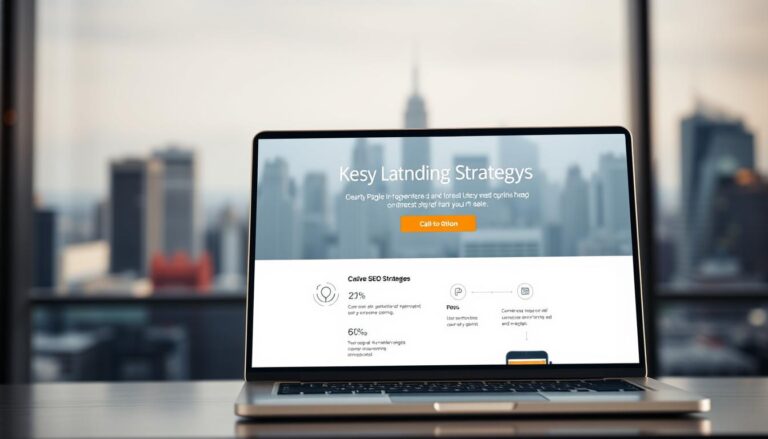I’ve learned that boosting SEO rankings is key for any website’s success. In today’s world, having a website isn’t enough. It must be seen by those who might visit it.
In this article, I’ll share my best ways to increase website visibility and get more visitors. By knowing how important SEO is and using the right methods, you can make your online presence much better.
Key Takeaways
- Understand the significance of SEO rankings
- Learn proven strategies to boost website visibility
- Discover how to drive more traffic to your website
- Implement techniques to enhance your online presence
- Stay ahead of the competition with effective SEO
Understanding SEO and Its Importance
In today’s digital world, knowing about SEO is key for businesses to succeed online. The internet keeps changing, making a strong online presence more important than ever.
To understand SEO’s value, first know what it is. Search Engine Optimization (SEO) makes your website more visible to web search engine users. It aims to improve your website’s quality and quantity of traffic.
What is Search Engine Optimization?
SEO uses many techniques to make your website better for search engines. This includes optimizing content, meta tags, and getting quality backlinks. The main goal is to boost search engine rankings so more people can find your site.
- Conducting thorough keyword research to identify relevant terms and phrases.
- Optimizing on-page elements such as titles, descriptions, and headings.
- Creating high-quality, engaging content that adds value to users.
Why SEO Matters for Your Business
SEO is important for your business because it affects your online visibility. This, in turn, impacts your ability to attract and keep customers. By enhancing website traffic through SEO, businesses can grow their brand and revenue.
- Improved online visibility helps businesses reach a wider audience.
- Targeted traffic increases the likelihood of converting visitors into customers.
- A well-optimized website enhances the overall user experience.
By understanding and using effective SEO strategies, businesses can outdo their competitors. Whether you want to improve search engine rankings or boost website traffic, knowing SEO is essential.
Conducting Effective Keyword Research
Keyword research is key in SEO. It shows what people are looking for, helping you create content they need. This way, you can improve search engine visibility.
Tools I Use for Keyword Research
I use Ahrefs, SEMrush, and Google Keyword Planner for research. These tools give me insights on search volume, competition, and related keywords. They help me optimize my content for better SEO.

How to Identify Long-Tail Keywords
Long-tail keywords are detailed phrases with less competition and better conversion rates. I start by brainstorming keywords related to my topic. Then, I use Ahrefs to check competition and search volume.
I look for patterns and themes in my keyword list. I also consider the user’s intent. This ensures my content meets their search needs. By focusing on the right keywords, I can boost my search engine rankings and attract more visitors.
On-Page SEO Techniques That Work
On-page SEO techniques are key to better SEO rankings. They help make your website more visible and attract more visitors. This is done by optimizing each web page.
Crafting Compelling Meta Tags
Meta tags are vital for on-page SEO. They tell search engines about your webpage’s content. This helps them see if it matches what users are searching for. Crafting compelling meta tags means writing titles and descriptions that grab attention.
Make sure your meta tags are short, accurate, and include your main keywords. Your meta title should be under 60 characters. Your meta description should be about 160 characters.
Optimizing Content for User Intent
It’s important to match your content with what users want. This means knowing what your audience is looking for. User intent can be informational, navigational, or transactional.
- Informational intent: Users seeking information on a particular topic.
- Navigational intent: Users looking for a specific website or webpage.
- Transactional intent: Users ready to make a purchase or complete a specific action.
Internal Linking Strategies
Internal linking is another great on-page SEO technique. It makes your site easier to navigate and helps search engines understand your site’s structure. Internal linking strategies involve creating a clear page hierarchy and using descriptive anchor text.
To improve your site’s SEO, link to relevant, high-quality content. This enhances user experience and boosts your website’s SEO.
The Role of Quality Content in SEO
To boost your SEO, making quality content is key. Good content draws in and keeps the right audience. It also leads to actions that make money. For SEO, your site’s content must show relevance and authority to search engines.
How Content Quality Affects Rankings
Content quality is a big deal for your site’s search engine rankings. High-quality content tends to get shared, linked to, and visited again. These actions are important to search engines. Also, quality content lowers bounce rates and boosts time on your site, helping your SEO.
What makes content quality include:
- Being relevant to your audience
- Having accurate and current info
- Being engaging and easy to read
- Using keywords well
My Tips for Creating Engaging Content
Creating content that grabs attention needs knowing your audience well. Here’s how I make content that connects:
- Know your audience: Get their problems, interests, and search terms.
- Use compelling headlines: Make headlines that are both informative and catchy.
- Optimize your content: Use the right keywords and make it easy to read.
By focusing on these tips, you can make your content better. This will help improve your SEO rankings.

Building Backlinks That Boost Authority
Building backlinks is a key way to increase website visibility and get more visitors. Backlinks are vital for SEO, and knowing how to get them is critical for any online business.
So, what makes a good backlink? A good backlink comes from a trusted source, matches your content, and adds value to users.
What Makes a Good Backlink?
A good backlink has a few key traits. It should come from a trusted domain, fit your niche, and be placed naturally. For example, a link from a well-known industry site is more valuable than one from a low-quality site.
Strategies for Earning Quality Backlinks
To get quality backlinks, create content that’s valuable, informative, and fun. Here are some effective strategies:
- Create high-quality, linkable assets that other sites will want to link to.
- Guest blog to build relationships with other sites in your niche.
- Use broken link building to swap dead links for live ones.
By using these strategies, you can boost search engine rankings and grow your online presence. Remember, getting backlinks is a long-term effort that needs patience, persistence, and creativity.
Leveraging Social Media for SEO
Using social media well can really help your SEO. It can make your website more visible and improve your SEO scores.
Social media is key for sharing and promoting content. Sharing your content online reaches more people and brings them to your site.
How Social Shares Impact Rankings
Social shares can help your website’s ranking indirectly. The exact effect of social shares on SEO is debated. But, popular content on social media can increase visibility, get more backlinks, and bring in more traffic.
- Social shares increase content visibility.
- They can lead to more backlinks from other websites.
- Higher engagement on social media can drive more traffic to your site.
Key Takeaway: Social shares may not directly boost rankings. But, they help build a stronger online presence that can positively affect your SEO.
My Favorite Platforms for Promoting Content
Not all social media platforms are the same for promoting content. Here are my top picks for boosting traffic and SEO:
- Facebook: It’s great for a wide range of content because of its huge user base.
- Twitter: It’s perfect for quick updates and real-time engagement.
- LinkedIn: It’s best for professional and B2B content.
Tip: Customize your content for each platform to get the most engagement.
By using these platforms well, you can increase your website’s traffic and SEO rankings. The key is to stay consistent and interact with your audience.
Technical SEO Considerations
Technical SEO is key to boosting website rankings and driving more traffic. A technically sound website is essential for improving search engine visibility and effective SEO ranking strategies.
Technical SEO includes website speed and mobile optimization. Let’s explore these important areas.
Importance of Website Speed
Website speed is a major SEO factor. A slow site hurts user experience and search rankings. To speed up your site, consider:
- Optimizing images to reduce file size
- Leveraging browser caching to store frequently-used resources
- Minifying CSS and JavaScript files to reduce code
- Using a content delivery network (CDN) to distribute content globally
These steps can greatly improve your site’s speed. This boosts user experience and improves search engine visibility.
Mobile Optimization Tips
Most internet users access websites on mobile devices. Mobile optimization is now a must. To optimize for mobile, I recommend:
- Using a responsive design that adapts to different screen sizes
- Ensuring that content is easily accessible on smaller screens
- Optimizing images and videos for mobile devices
- Testing your website on various mobile devices to ensure compatibility
By focusing on mobile optimization, you enhance user experience, increase engagement, and boost your SEO ranking strategies.
Regularly Monitoring and Adjusting Strategies
To keep and boost SEO rankings, it’s key to watch performance closely and tweak strategies as needed. This ongoing effort helps spot areas for betterment. It also makes sure top SEO methods are working well.
Tools for Tracking SEO Performance
I use tools like Google Analytics and SEMrush to keep an eye on my SEO. These tools give me important info on website visits, keyword rankings, and more. This info helps me shape my SEO tips.
Adapting Strategy Based on Results
By looking at the data from these tools, I can fine-tune my SEO plan. This might mean changing keyword targets, improving content, or getting more quality backlinks.
Keeping up with changes and tweaking strategies is vital in the SEO world. By constantly checking and adjusting, my website stays on top of search engines. It also keeps attracting the right visitors.










